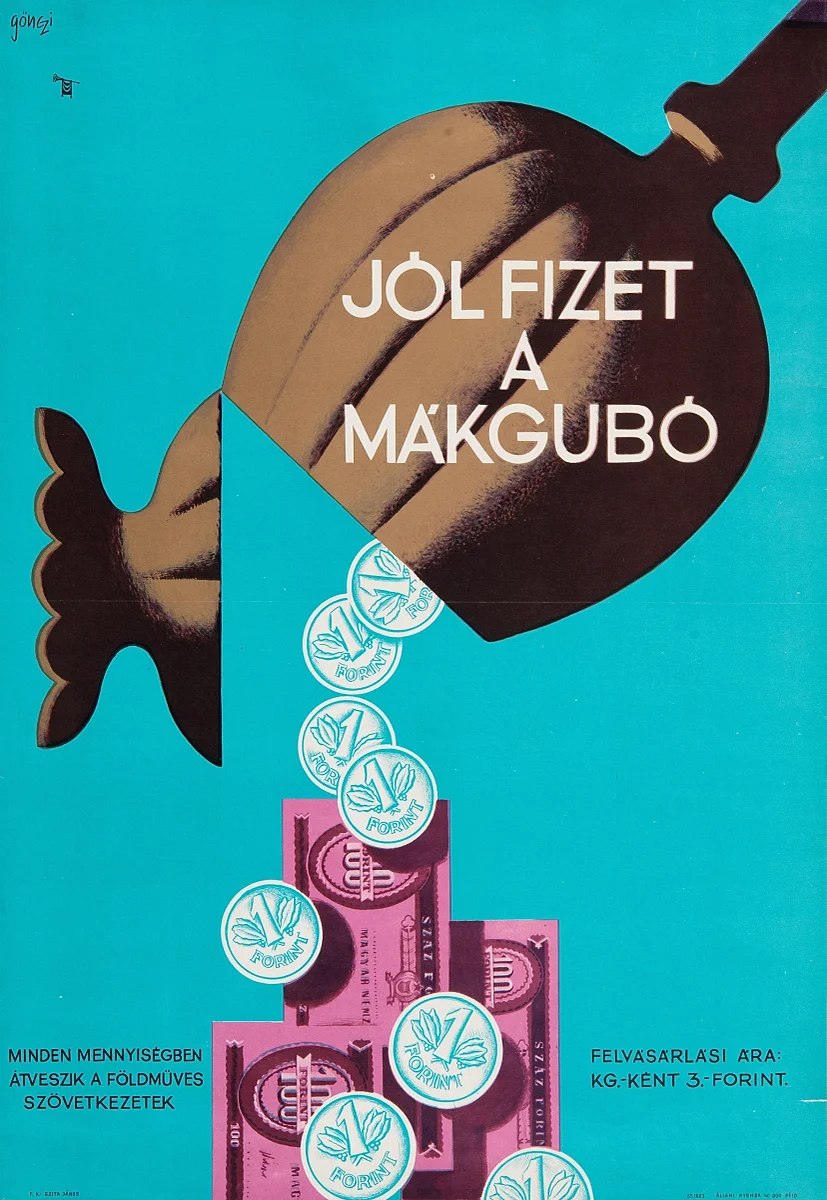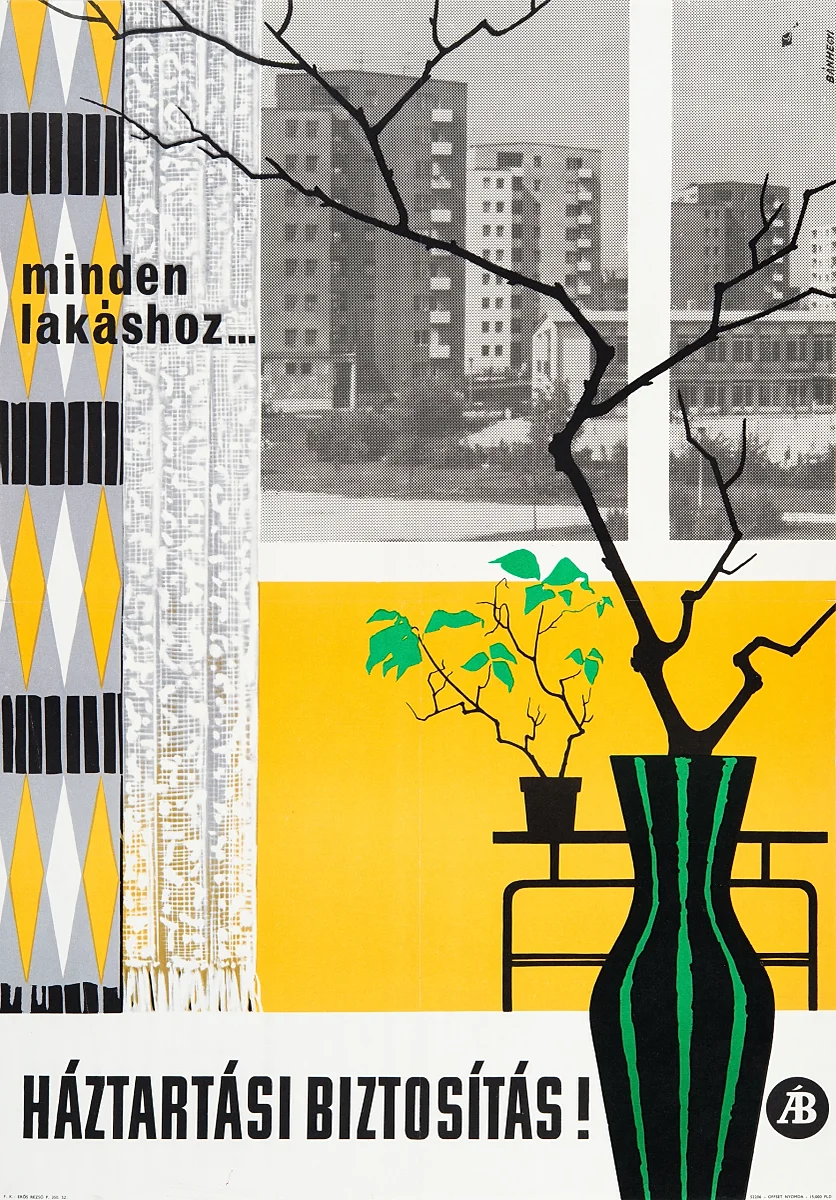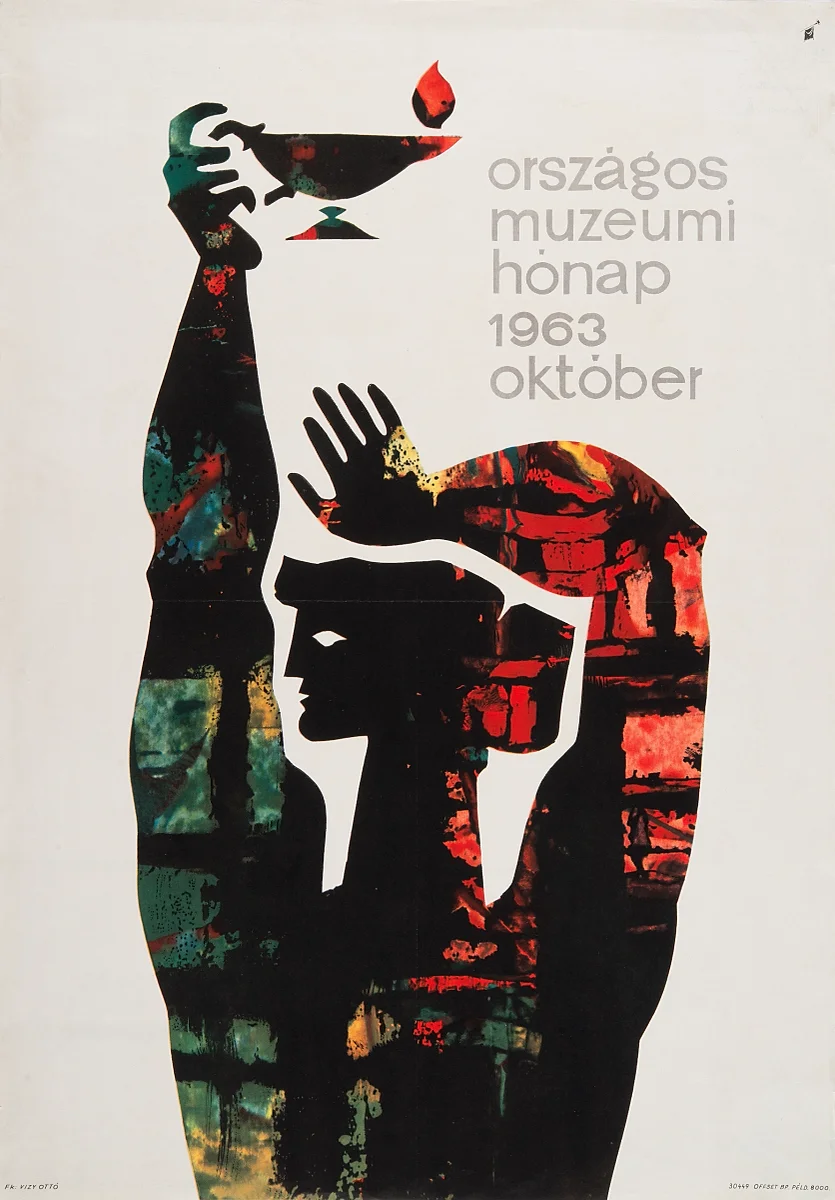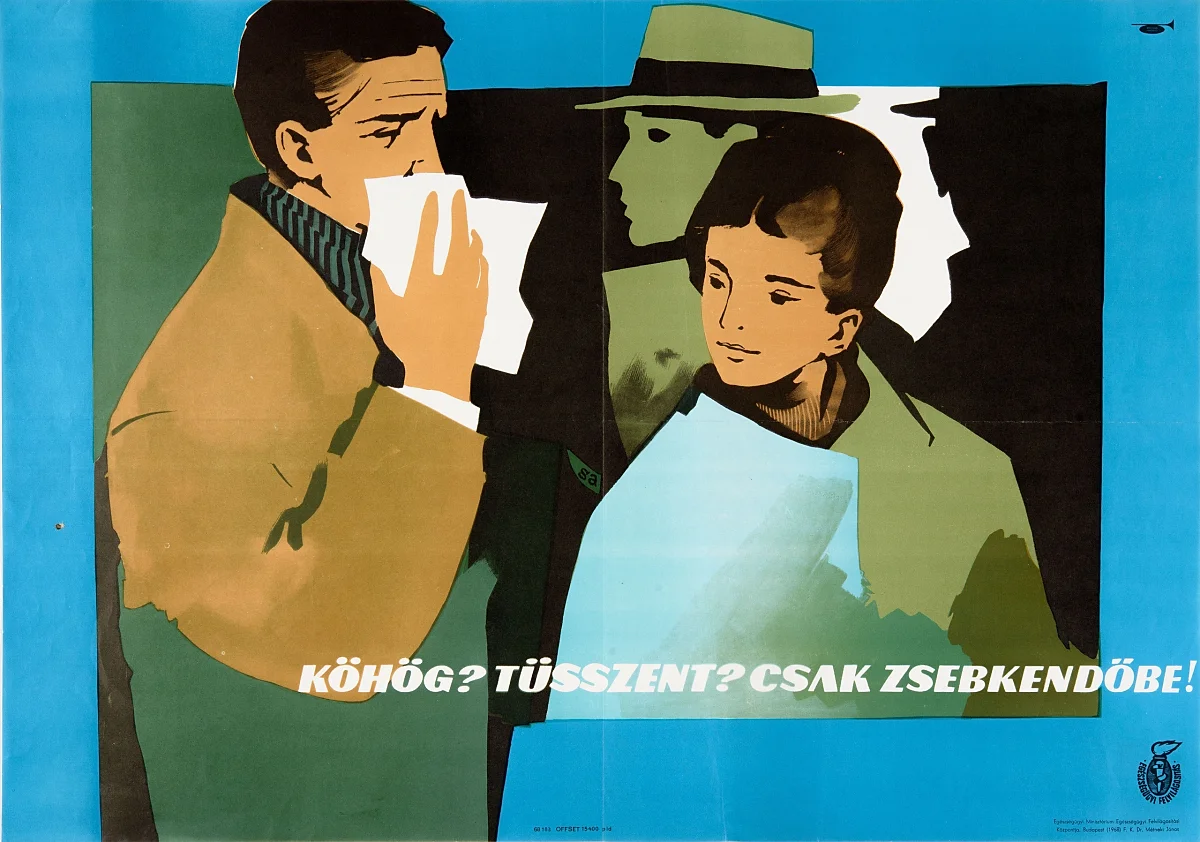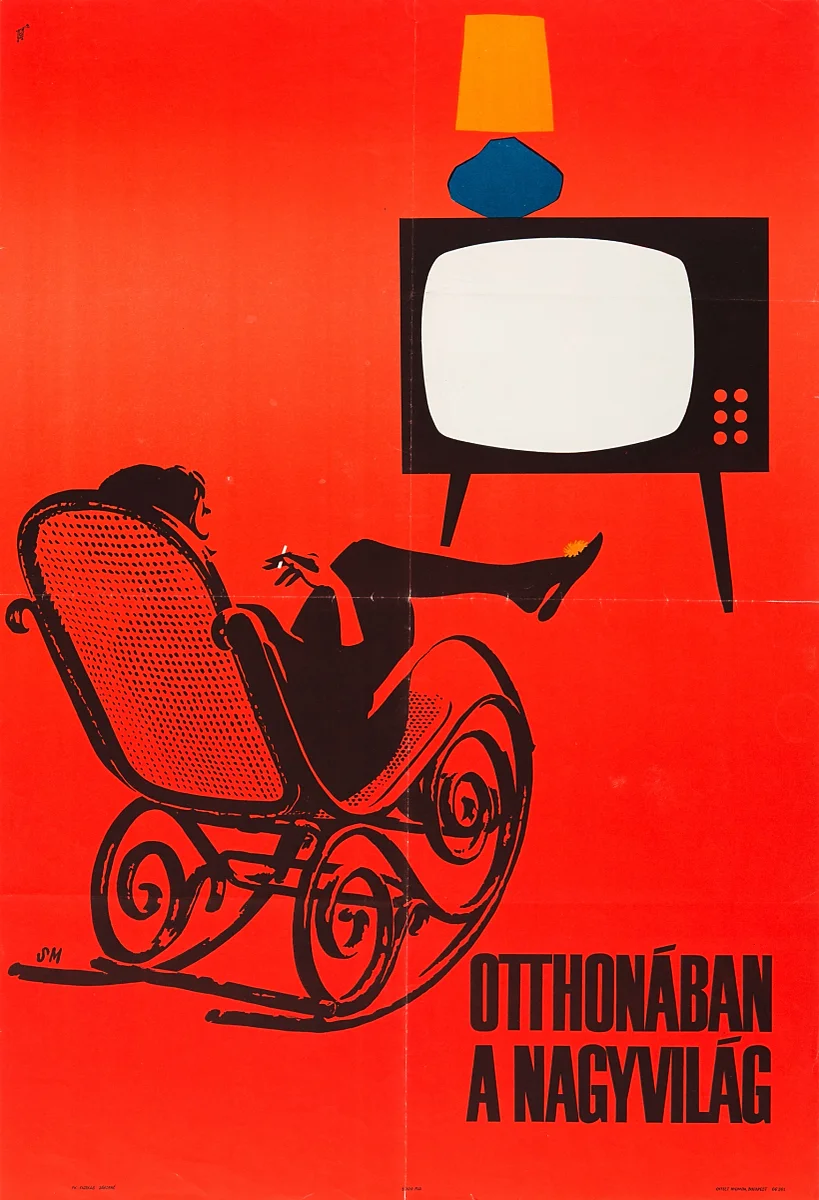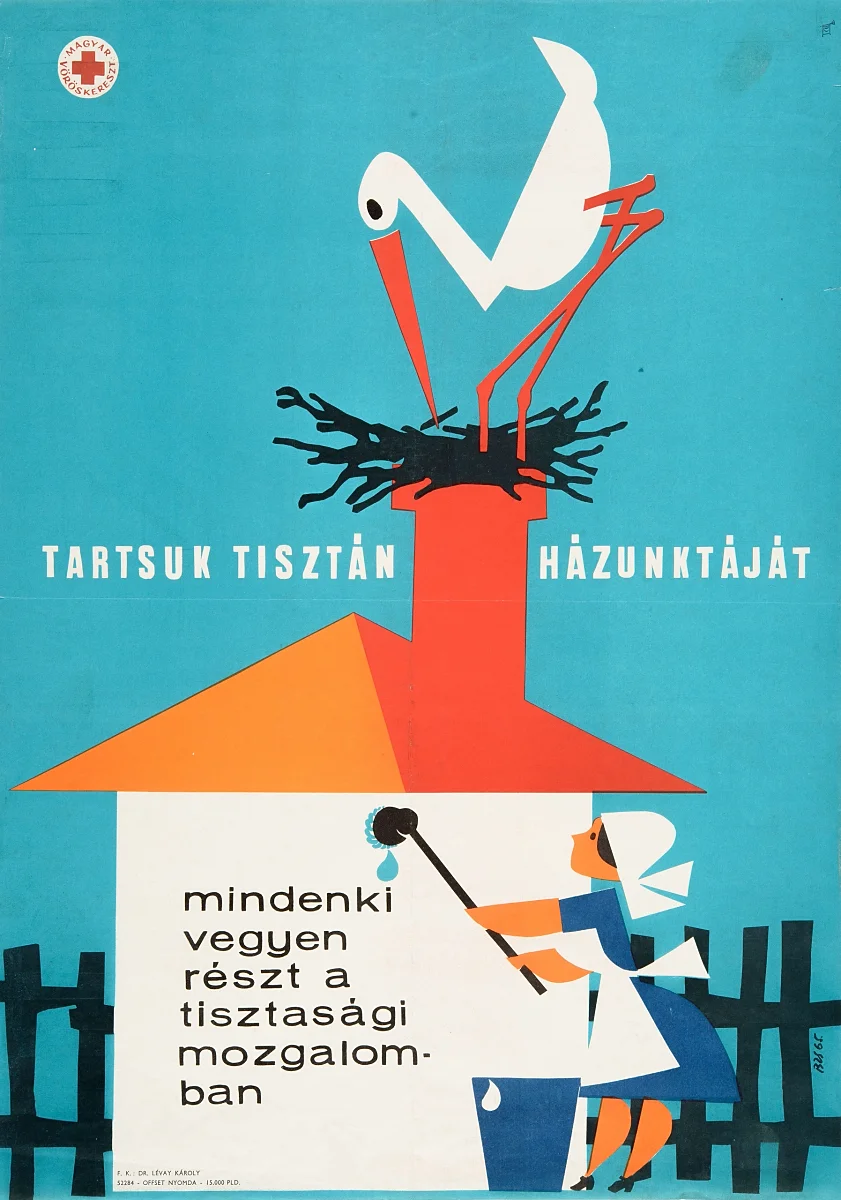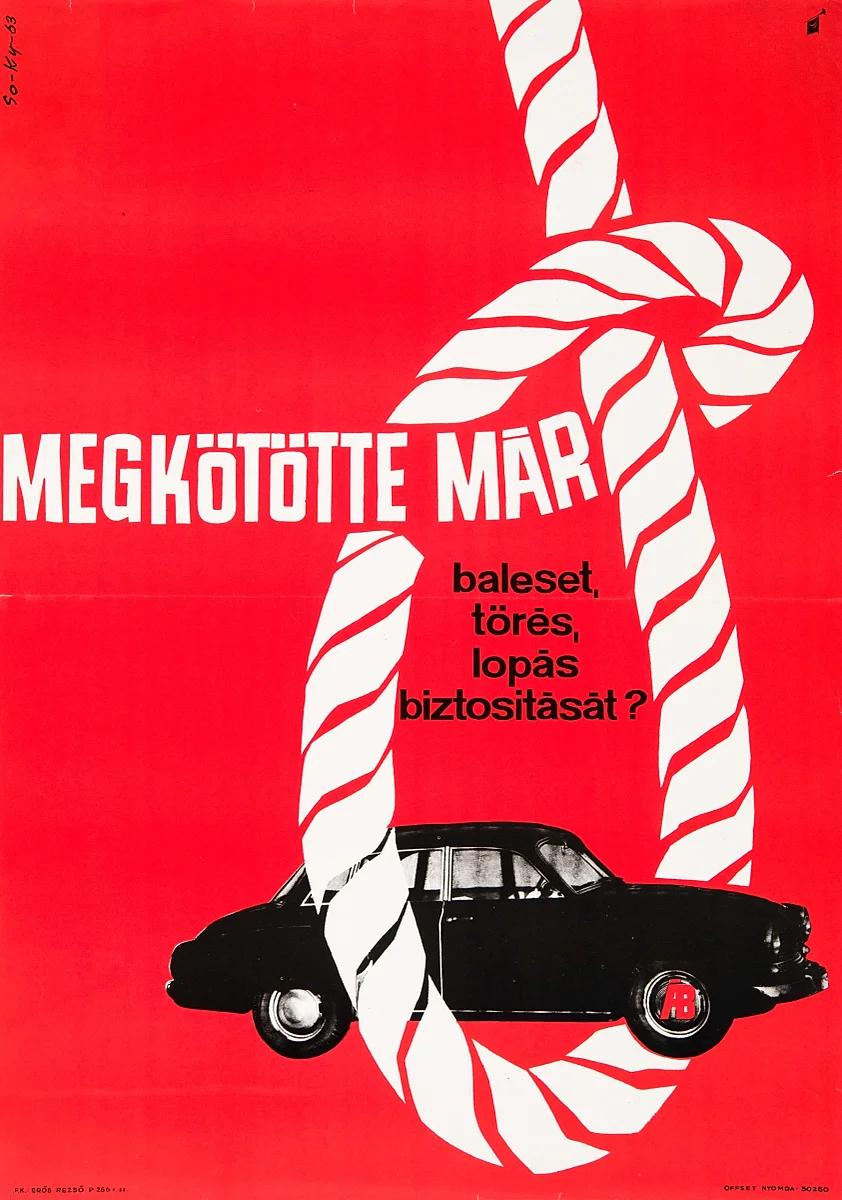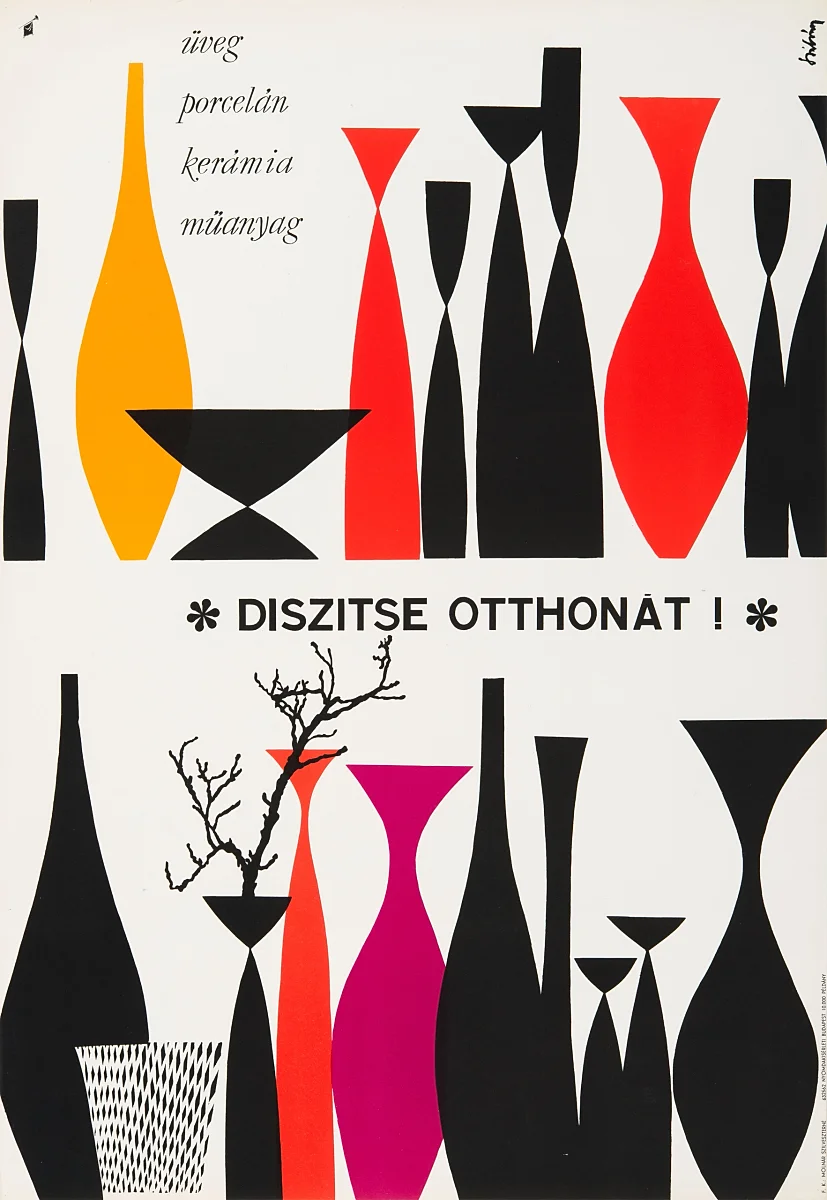Posters in the name of socialism
Dorottya Márkus: Posters in the Service of Socialism
Supervisor: Attila Horányi
Consultant: Eszter Földi
Posters created during the Kádár era, as well as posters in general, occupy a unique position at the intersection of applied and autonomous art. Focusing on the period from the 1950s to the 1970s, this diploma project highlights the interdisciplinary nature of the poster as a genre and its pivotal role in the socialist education of the masses, as well as in everyday and cultural life. As an applied art form, the poster maintains a more direct connection to economic conditions, politics, and society than classical art forms, not only wielding significant influence over public taste but also serving as a historical document that captures the visual trends and socio-economic characteristics of its time.
Drawing upon the extensive collection of the Hungarian National Gallery’s Department of Prints and Drawings, this research explores the all-encompassing politicisation of everyday life through an analysis of more than 10,000 artworks.
The investigation confirmed the core assumption of the study that socialist state control and propaganda infiltrated not only the political and economic spheres but permeated every facet of life, including the cultural and social domains, ultimately becoming an integral part of daily life. As one of the most striking tools of visual agitation, the poster – a medium reaching millions – played a central role in this process.
